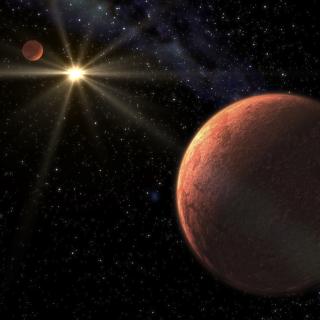Bibcode
Lodieu, N.
Referencia bibliográfica
Monthly Notices of the Royal Astronomical Society, Volume 431, Issue 4, p.3222-3235
Fecha de publicación:
6
2013
Número de citas
53
Número de citas referidas
49
Descripción
We present the results of a proper motion wide-field near-infrared
survey of the entire Upper Sco (USco) association (˜160 square
degrees) released as part of the United Kingdom Infrared Telescope
Infrared Deep Sky (UKIDSS) Galactic Clusters Survey (GCS) Data Release
10 (DR10). We have identified a sample of ˜400 astrometric and
photometric member candidates combining proper motions and photometry in
five near-infrared passbands and another 286 with HK photometry and
2MASS/GCS proper motions. We also provide revised membership for all
previously published USco low-mass stars and substellar members based on
our selection and identify new candidates, including in regions affected
by extinction. We find negligible variability between the two K-band
epochs, below the 0.06 mag rms level. We estimate an upper limit of 2.2
per cent for wide common proper motions with projected physical
separations less than ˜15 000 au. We derive a disc frequency for
USco low-mass stars and brown dwarfs between 26 and 37 per cent, in
agreement with estimates in IC 348 and σ Ori. We derive the mass
function of the association and find it consistent with the (system)
mass function of the solar neighbourhood and other clusters surveyed by
the GCS in the 0.2-0.03 M⊙ mass range. We confirm the
possible excess of brown dwarfs in USco.
Proyectos relacionados

Estrellas de Baja Masa, Enanas Marrones y Planetas
Se investigan los procesos que conducen a la formación de estrellas de baja masa, enanas marrones y exoplanetas y caracterizar las propiedades físicas de estos astros en varias etapas evolutivas. Las estrellas de muy baja masa y las enanas marrones son probablemente los objetos más numerosos de nuestra Galaxia, pero no por ello están
Rafael
Rebolo López